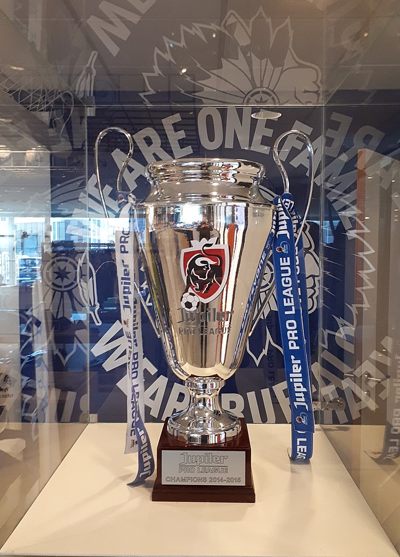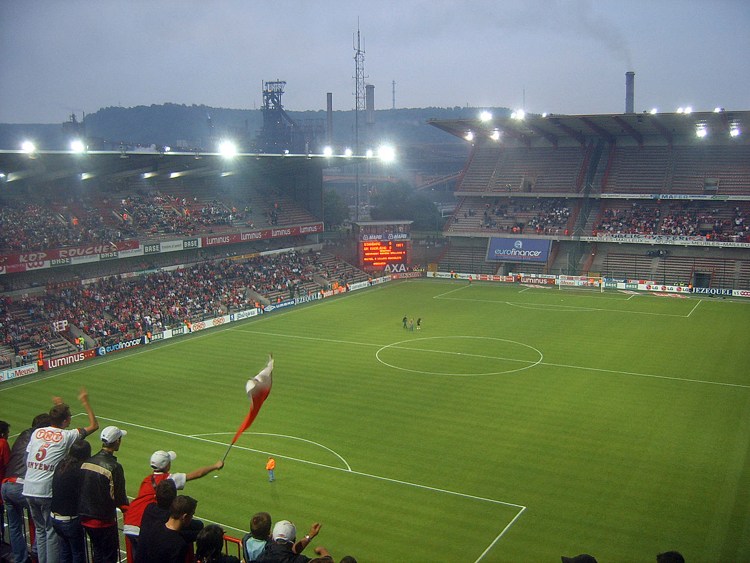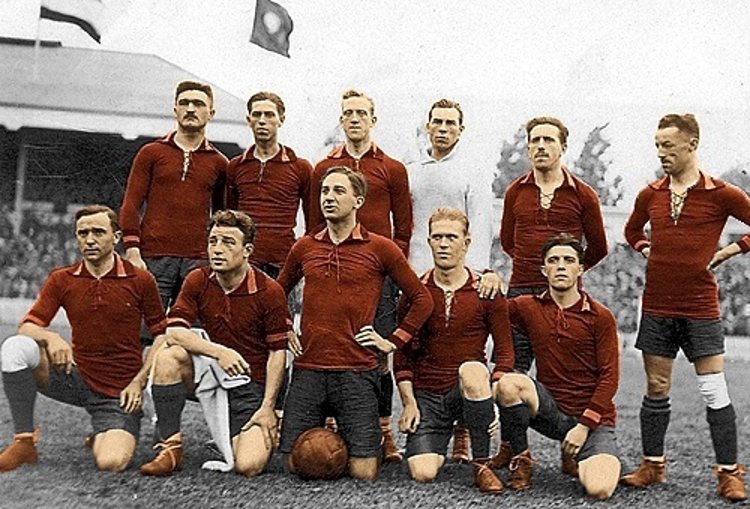Belgian First Division A Stadiums & Stats

Currently known as the Jupiler Pro League because of sponsorship, the Belgian First Division A is also sometimes called the Belgian Pro League.
It is the top-flight in Belgium and features sixteen teams competing to be named the champions of Belgium and operates a system of promotion and relegation to the second-tier in the country, the Belgian First Division B.
You may well think that it’s odd that the top two leagues in Belgium are both referred to as the ‘First Division’ with only a letter separating them – and you’d be right, but it’s because it’s actually one league that has been split in two.
In this section, we’ll explain how the league is set-up and we’ll also tell you all about its history.
First, though, we’ll let you know about the different types of stadiums you can expect to find if you head to Belgium to watch a few matches there.
Stadium Stats
| Stadium | Year Opened | Capacity | Ave Attendance | Record Attendance | Record Attendance Match |
|---|---|---|---|---|---|
|
Constant Vanden Stock
R.S.C. Anderlecht |
1917 | 22500 | 17528 | 38349 | Anderlecht v Standard de Liège (1980) |
|
Ghelamco Arena
KAA Gent |
2013 | 20000 | 19785 | 20000 | Gent v KV Mechelen (2013) |
|
Jan Breydel Stadium
Club Brugge KV |
1975 | 29062 | 26129 | 28728 | |
|
Luminus Arena
K.R.C. Genk |
1999 | 23718 | 20000 | 24956 |
Team Stats
| Team | Year Founded | Nickname | Team Owner |
|---|---|---|---|
| Club Brugge KV | 1895 | Blauw-Zwart, Club, FCB | Bart Verhaeghe |
| Gent | 1864 | De Buffalo's | Ivan De Witte |
| KRC Genk | 1988 | Blauw-Wit (Blue-White), Racing, KRC, De Smurfen (The Smurfs) | Peter Croonen |
| R.S.C. Anderlecht | 1908 | Purple & White, Sporting | Wouter Vandenhaute |
Belgian First Division A Stadiums

Football has been played in Belgium since the final part of the 19th century and is the most popular sport in the country by a mile. As you’d expect, though, that doesn’t necessarily mean that the country is swamped with huge megastructure stadiums. Instead, there are a few reasonably large grounds that are home to the most popular and successful teams in the land, with the rest of the stadiums being smaller affairs.
The biggest ground in the country is the national team’s home, the King Baudouin Stadium. It can hold just over 50,000 supporters but, of course, is not one of the Belgium First Division A stadiums. The next largest belongs to Standard Liėge and can house 20,000 less at 30,000. The majority of grounds in the league can take about 15,000 fans without issue, though a few actually have a capacity of less than 10,000.
The smaller stadiums in the league tend to follow the ‘English Style’ of having a separate grandstand on each side of the pitch, whilst the larger ones tend to follow the more ‘European Style’ of a bowl of continuous seating all around the ground. The bowl style is much more common with the newer stadiums that tend to be much more contemporary and clean in their design.
About The League
 There are two professional leagues in Belgium, starting with the top-flight. This is known as the Belgian First Division A, as you might well have picked up on by now. It used to be called the Belgian Pro League so it’s possible that you might still hear people calling it that. The format of the league has been altered quite dramatically in recent years, starting with the fact that there is no longer a winter break over the Christmas period.
There are two professional leagues in Belgium, starting with the top-flight. This is known as the Belgian First Division A, as you might well have picked up on by now. It used to be called the Belgian Pro League so it’s possible that you might still hear people calling it that. The format of the league has been altered quite dramatically in recent years, starting with the fact that there is no longer a winter break over the Christmas period.
The number of professional teams that play their games in Belgium was reduced to twenty-four after the 2015-2016 season. This is made up of sixteen teams in the First Division A and eight teams in the First Division B. The other major thing that changed was the introduction of a playoff system which earned some criticism from fans of Belgian football, with many pointing out that the Dutch Eredivisie had recently abandoned a similar system. Criticism has also been levelled at the Belgian Football Association because of the complicated nature of the league, which we’ll attempt to explain here…
As with most leagues, three points are awarded for a win, one for a draw, and none to the losing team. At the end of the season teams are separated according to points won, and if they have the same number of points it comes down to total wins and then goal difference. If teams are still even with each other after that then they play a two-legged game to decide their final standings. Once the season is complete, in March a championship playoff begins. The points won from the regular season are split in half before the top six teams play each other twice. Whoever finishes top wins the league. The sixteenth placed team is automatically relegated. Basically, it’s really complicated.
Belgian First Division A History

Just seven teams took part in the first Belgian league when it was held in the 1895-1896 season. It had a round-robin format and FC Liégeois finished as the winners. The league didn’t have a relegation or promotion system in place at the time, mainly because there was nowhere to be promoted to or relegated from. Instead the bottom two teams left the competition and were replaced by different clubs for the following season. From 1898 to 1900 the Belgian FA tried to mix up the league’s format, having two divisions and a final game played over two legs. It reverted to one league from 1900-1901 then back to two leagues for the following three seasons.
The Belgian FA couldn’t make up their minds and so the leagues went back and forth from one big league to two small leagues quite regularly. In 1906 promotion and relegation was finally introduced and the bottom club from the first division swapped places with the top side in the second division. In 1908 the number of teams that took part in the first division changed from ten clubs to twelve. This was achieved by promoting two teams from the second division but not relegating anyone. The championship was then suspended during the First World War.
The Belgian top-flight resumed for the 1919-1920 season but was stopped again a few decades later when German troops invaded Belgium in 1940. Interestingly, it resumed in 1941 and wasn’t suspended again until 1944, in spite of the fact that Liersche SK actually lost players to a bomb attack. The actual format of the league remained pretty much the same until the end of the first decade of the new millennium at which point it was entirely re-structured. The first version of the new top-flight was won by RSC Anderlecht, which isn’t entirely surprising considering they’re the most successful club in Belgium. They have won more than twice the number of titles than their closest rivals, Club Brugge.
